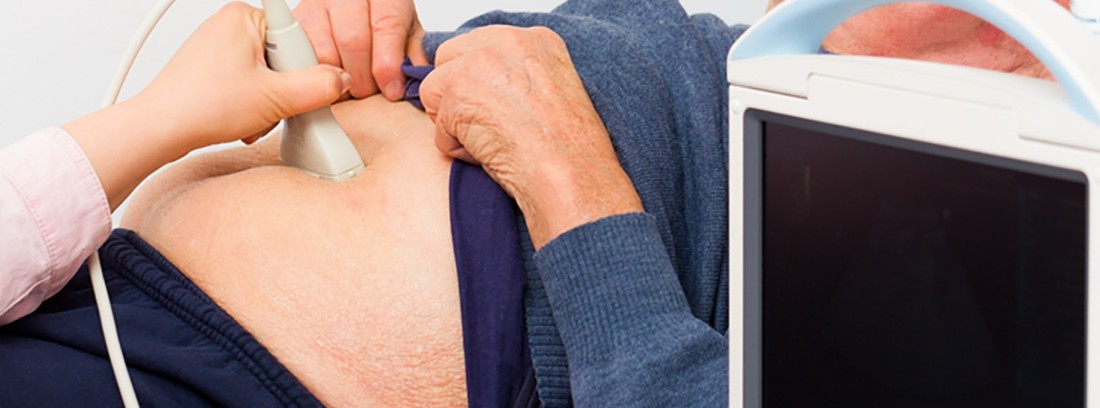Treatment of constipation in older people

In the treatment of constipation in the elderlyAs in other pathologies, a diagnosis must be established and the situation, results and safety of each proposed therapy must be periodically evaluated. These different treatment options are:
Options against constipation in the elderly
- In the case of echronic constipation worksl, where a secondary cause has been ruled out and in geriatric outpatients, it is initially recommended to change lifestyle habits, change diet and increase fluid intake and physical activity. The next step is to take fiber supplements. Wheat is the one that produces the greatest increase in fecal weight, followed by fruits and vegetables. In case it is difficult to increase fiber in the diet, fiber supplements such as methylcellulose or plantago ovata can be administered.
- If he constipation persists, once the pathology is ruled out, they should be given osmotic-type laxatives, such as lactulose / lactithiol or magnesium hydroxide. It should be remembered that these drugs should be used with care in patients with heart or kidney failure, especially in the latter, in which there could be hydroelectrolyte alterations or hypermagnesemia. Bulk-forming laxatives and osmotics are associated with increased frequency and improved stool consistency and symptoms of constipation. Among the most recommended laxatives are polyethylene glycol and lactulose. It is important, in the case of polyethylene glycol, to avoid it in patients with swallowing disorders, due to the risk of chemical pneumonitis.
- If the problem is not solved, you can add stimulant laxatives, such as bisacodil or sennosides.
- The emollients, such as mineral oil or paraffin oil, should not be considered of choice in geriatric patients with functional constipation. On the other hand, its continued use can decrease the absorption of certain fat-soluble vitamins. They can use promptly in patients with anorectal pathology such as fissures that induce defecation pain, etc. They can be administered orally or in the form of a suppository.
- The prokinetics They are indicated in patients with chronic intestinal motility disorders, neurodegenerative diseases such as Parkinson's disease or motor disorders of primary origin such as Ogilvie's syndrome.
- There is a need to prescribe a laxative simultaneously with the indication of any opioid treatment. For end-of-life palliative patients, increased fiber may cause more problems than benefits.
- Enemas and suppositories, like those of glycerin, are useful in short and specific treatments, but unsuitable as single long-term treatments.
- Physical measurements: Abdominal massage techniques in dependent elderly people have been shown to accelerate colonic transit.
- Surgery: reserved only for severe refractory cases in which medical treatment has failed.
Likewise, in the elderly it is interesting to take into account a series of tips to avoid the establishment of constipation and thus avoid the complications and associated morbidity.
General advice
Maintain a good bowel rhythm
It is important to re-educate the individual, so that he identifies his intestinal rhythm and modifies the negative attitudes that inhibit this stimulus. It is useful to recommend that you go to the toilet regularly, when you get up in the morning. Too it is necessary for the person to walk and wander, especially after meals, to regain the gastrocolic reflex, which occurs approximately 30 minutes after eating. Some people may find a diary to record the time and characteristics of bowel movements in this relearning process.
Dietary fiber
In western societies a frequent cause of constipation it is a poor intake of fiber. The recommended daily amount is 20-35 g / day. So older people should be encouraged to increase their fiber intake to the recommended amounts, consuming vegetables, fruits, whole wheat bread or wheat bran, etc. In people with low fiber intake, consumption should be increased progressively, since a rapid increase can lead to flatulence and digestive discomfort.
Non-pharmacological interventions also include the consumption of guar gum, bran, lentils, aloe vera, and fruits. Some of them act by increasing dietary fiber, while others act by increasing the stimulating action. The aloe vera is a popular remedy which, like rhubarb, contains anthraquinone derivatives, with a stimulating effect. The fruit can work by increasing fecal mass and ingested and fermented fluid in the colon.
Adequate hydration
An adequate level of is considered important for a good intestinal transit. At the level of the last section of the colon, the reabsorption of water from the feces occurs, which in the case of patients with a low degree of hydration can favor fecal impaction.
Regular exercise
There are data from observational studies that suggest that a low degree of constipation increases the risk of constipation twice. Prolonged bedtime and immobility are also associated with constipation. Patients should be encouraged to maintain a degree of physical activity to increase bowel regularity.
(Updated at Apr 14 / 2024)